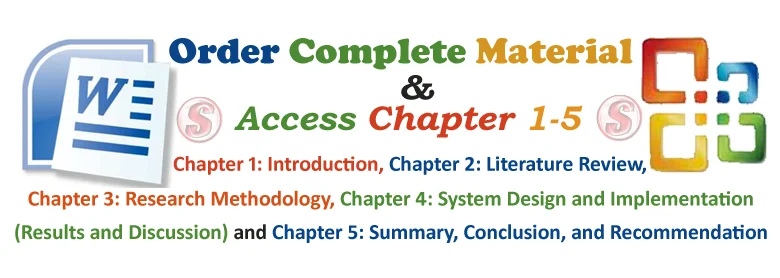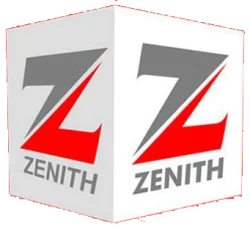1.1 Introduction
Virtual Classroom E-learning is a system designed to help students gain access and acquire knowledge in any university of their choice. It can include: Enhance face –to- face instruction (on campus, in class use of computer and the World Wide Web (WWW), enhanced distance education (on or off campus) individuals and group learning with both print and computer-based materials instruction entirely on- line (individual and group learning) because of this mix virtual classroom and text based e- learning knowledge is moving towards every student being an e- learner atlast for part of their study, whether through learning materials, e-mail for contacting teachers/ tutors or any one of their myriad other e-learning applications. Virtual Classroom learning results to learning and other supportive resources that are available through a computer and it includes computer based training, computer based instruction and technology. The e-learning system use text messages to deliver information and data. Student or e-learners will be in their computer receiving lectures as if they are in classroom. This has gone a long way helping e-learners to acquire degree in the institution they have never seen.
As a prelude to other parts of this study, this chapter will discuss the background upon which this study was initiated, the statement of problems that led to this study, the Aim and Objectives of the study. Others are Significance of the study, Scope of work, Limitations of the Study and Definition of technical terms.
1.2 Background of Study
Internet as global connection of computers sited around the world forming huge network for information to be shared and disseminated by many millions of people has done so well in information technology and in education so to speak. Virtual classroom and text-based e-learning cannot be an exception. Often time’s students experience a lot of difficult in the quest for basic knowledge from higher institution of their choice, not for the fact that the person doesn’t have resources to acquire them but the risk in traveling from the said institution wherever the person might be pose problems. In order to reduce these risks, satellite computer were established but did not solve the problem of traveling out from one’s location to the said location in quest for knowledge.
In this regard, Federal Polytechnic Nekede compete with a of institutions, this sometimes reduces the number of students enrollment in the school to the above listed problems the system “virtual classroom and text based e- learning was designed with this Federal Polytechnic Nekede will have thousands of student in which she doesn’t provide any a accommodation or any structure for and still gain much grounds economically and student all over the world suffer less in having any of Federal Polytechnic Nekede’s certificate.
This is designed that before anybody can participate must register. Students have free registration form but lecturers must provide their staff number that tally with their surnames before they have access to registration form. One month is giving to student to pay his/her school fees after registration to remove his/her name from the database. This will go along way increasing student’s enrollment in the institution. The system has very security conscious software that resides in the ever helping except those supposed. Having seen and observed. Having seen and observed this benefit to students in an unprecedented scale. Indeed, this sounds interesting to my academic pursuit in FPN. Perhaps this calls for implementation.
1.3 Statement of the Problem
Due to the problems students find and experiences, it has never been easy for students to acquire basic and necessary education in any institution one wishes irrespective of the fact that the resources are there. This poses a lot of problems sometimes they will embrace not going to school at all. It is very impossible for a student in America or any other country coming to FPNO everyday for lectures more so, it will be impossible for FPN staff going to America or any other country where the students might be located everyday to deliver lectures. Sometimes if number of students increase reduction in student admission will be affected in order to provided adequate structures where they can have their lectures. The above views are what gave birth to the research work in order to find solution to them.
1.4 Aim and Objectives of Study
The aim of the study is to develop a Virtual Classroom System for Teaching and Learning in a University Environment. In achieving this aim, the following specific objectives were laid out as follows to design an application that will:
- Provide alternative way of attaining education
- Facilitate the development of information technology
- Enhance examination and certification of students thereby improving the standard of education.
- Reveal the use and technology of wireless network to the user.
- Proffer solution to students whom because of nearness to institute and are unable to acquire knowledge that they need.
- Provide students easier way to acquire any of the FPNO certificates without been in the institute or with less difficulty.
1.5 Significance of Study
Virtual classroom can provide benefits for the organizations and individuals involved. Improved performance: it is interactive to the students thereby improving their productivity.
- Improves Standard of Education: it eliminates examination inadequacies like examination malpractices.
- Increased Access: It enables people from any part of the world to be educated.
- Convenience and Flexibility to Learners: learning process is structured in units; this makes the learner study at his own convenience without getting too bored with lectures.
- Reduced cost: it reduces the cost of learning, examination and result processing institutions.
This study will be of immense benefit to researchers who intend to know more on this study and can also be used by non-researchers to build more on their research work. This study contributes to knowledge and could serve as a guide for other study.
1.6 Scope of Study
The study focuses on the Development of Virtual Classroom System for Teaching and Learning in a University Environment.
1.7 Limitations of the Study
During the course of this study, many things militated against its completion, some of which are:
- Time Constraint: The time frame given to accomplish this project was very short due to school academic calendar and it was carried out under pressure which made the researcher not to implement some necessary features.
- Establishment Policies: Establishment policies posed a serious limitation as most staffs are not ready to release information needed for this project work. There were lots of information needed from the staffs of this institution to enhance the study which took them time to release or they did not release at all for security purposes, hence the scope was reduced.
- Research material: availability of research material is a major setback to the scope of the study.
- Frequent power failure: This made the researcher append more money on fuel to ensure sustainable power.
- Financial Constraint: Insufficient fund tends to impede the efficiency of the researcher in sourcing for the relevant materials, literature or information and in the process of data collection (internet).
1.8 Definition of Terms
Computer: an electronic device that is capable of accepting data, processing data automatically, store it, produces the result where needed.
Virtual Classroom: is an act of using IT tools to distribute or share knowledge between groups of learners. It is not going to be physically but the use of electronics.
E–Learning: it is an acronym of electronic learning it is an aspect of virtual classroom that is concerned with sharing of knowledge electronically by use of text video, web or any other IT tools.
File: This is a collection of related records.
VEL: This is the acronym of virtual electronic learning
Program: a set of logical instructions combined together to perform a specific task to a given problem and providing solution to it.
IT Tools: is any machines techniques etc. used in information technology.
Output: result of the processed data by the computer.
Input: data supplied to the computer for processing.
IT (Information Technology): It is combination of computing and telecommunication facility.
Data: raw materials used by the computer.
Information: processed data capable of solving a problem
E-mail: electronic mail, which is an alternative of HIPOST. This is the use of on - line computer to send messages across the net.
Storage Devices: a device for storing data in the computer
Computer Network: it is connection of two or more computers using special protocol such that they share data or information inform of text, audio, messages or mail.




